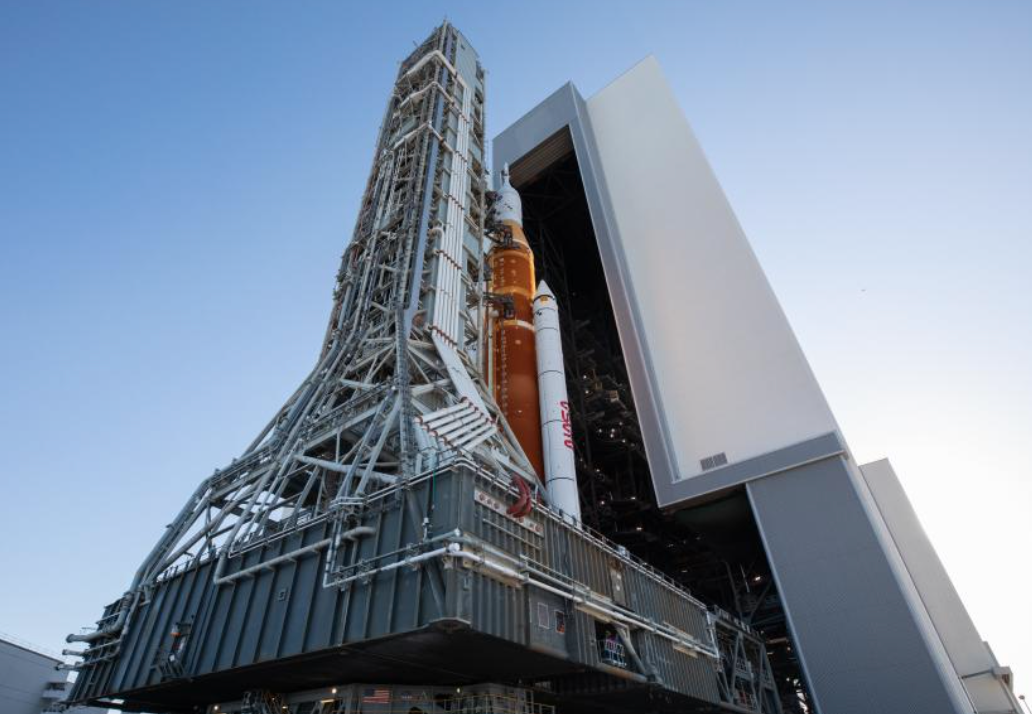Helga, Zohar and Moonikin may be unfamiliar names to you, but they will live in eternity should America successfully return to the Moon – the ultimate goal of NASA’s Artemis spacecraft. Artemis is an apposite name for the mission; in mythology, she was the sister of Apollo. The technology deployed in NASA’s latest Statue-of-Liberty-sized rocket, too, is a close relative of that used in the Apollo XI 1969 landing. It is these antiquated systems that have made Artemis so expensive and so risky that its first passengers should include the three aforementioned crash dummies, who are elliptically orbiting the moon as I write.
There are other similarities between the current moonshot and that launched by Kennedy in his iconic Rice University address, in which he vowed to send Americans to the lunar surface before the decade’s end. Firstly, the mission is at the locus of global superpower rivalry between a domestically divided United States and a technologically sophisticated Communist state; secondly, astronauts are marketing Americans’ ideals of constant expansion, Manifest Destiny and advancing human progress; and finally, both are expensive (one might say astronomically so).
While Artemis – which bears ten mini-satellites, variously exploring asteroids, mapping the lunar surface, and studying solar radiation – may appear to be a program of scientific discovery, its exorbitant budget reveals that it is in fact a cautionary tale of congressional folly and flawed decision-making.
NASA’s journey to Artemis began in 2003, when the Columbia space shuttle disintegrated upon reentry, sending debris slashing across a chilly Texan sky – and the shuttle’s seven crew to their deaths. The tragedy precipitated the permanent dissolution of the shuttle program in 2011. For the first time since 1969, NASA lacked the facility to send astronauts to space, instead relying (embarrassingly) on Russia’s Soyuz system.
Space missions had been a consistent point of American pride since the Sixties: Congress did not want to cede the field to Russia, China and other foreign adversaries. The idea of relying on Soyuz in the long term was more than unappealing: it was unacceptable. Congress began to consider alternatives under Obama. The first option was to rely on private corporations, which promised cheap launches and could perform the rather mundane tasks – like ferrying astronauts to and from the International Space Station, or launching the occasional satellite – which had previously been the forte of the space shuttle. Elon Musk’s SpaceX had conducted its first rocket test in 2006, and achieved its first successful launch two years later. By 2012, the firm was establishing a consistent record of mission completion, with its reusable Falcon rocket spearheading efforts. Nevertheless, SpaceX boasted of fewer than a dozen launches, and, as a scrappy startup headed by a mercurial executive who came complete with an eccentric savior complex, was distrusted by NASA. The second option, advanced by senators seeking to safeguard jobs at space contractors like ULA (United Launch Alliance, an Alabama firm) and Boeing, was to invest in both promising commercial and traditional state-led initiatives. So Artemis was conceived, with a budget that would rocket to $93 billion for four flights by 2025 (as estimated by NASA’s budget watchdog), and utilizing excess shuttle parts in what would be little more than an Apollo built on 1981 shuttle-era technology.
Retrospectively, this decision has come to look worse by the day. The comparative performance of SpaceX, and now, other commercial players’ delivery systems puts Artemis to shame. According to the company, SpaceX’s largest rocket, Starship, will cost in the region of $10 million to launch: that compared with over $2 billion for every Artemis mission. These rockets, moreover, are fully reusable.
NASA’s outdated approach isn’t only more expensive, but its inefficiencies have begun to detract from the mission’s goals. As in 1969, scientific concerns are secondary to issues of global competition and an urgent need to impress on the global stage. Artemis will return to the moon before a competing Chinese or Russian mission, but either of those nations seems likely to do it more cheaply and efficiently than Artemis. If spiraling costs, rather than America’s triumphal return to the lunar surface with a diverse crew of astronauts (which will include the first woman and black person to visit the moon) make global headlines, the political investment that is Artemis would be for naught.
The best for which one can now hope is that Artemis succeeds, but that NASA has learned its costly lesson and will turn in future to corporate partners. By using the quick, cheap alternatives advanced by SpaceX and other private firms, America would be telling a different and important political story: that private enterprise, free people, and market forces are the most potent instruments of American innovation, and the West’s power in the face of repressive regimes. Then, perhaps, we as citizens will be able to focus to a greater extent on the majesty and scientific value of space exploration, and the free world’s powerful capacity for human advancement.






